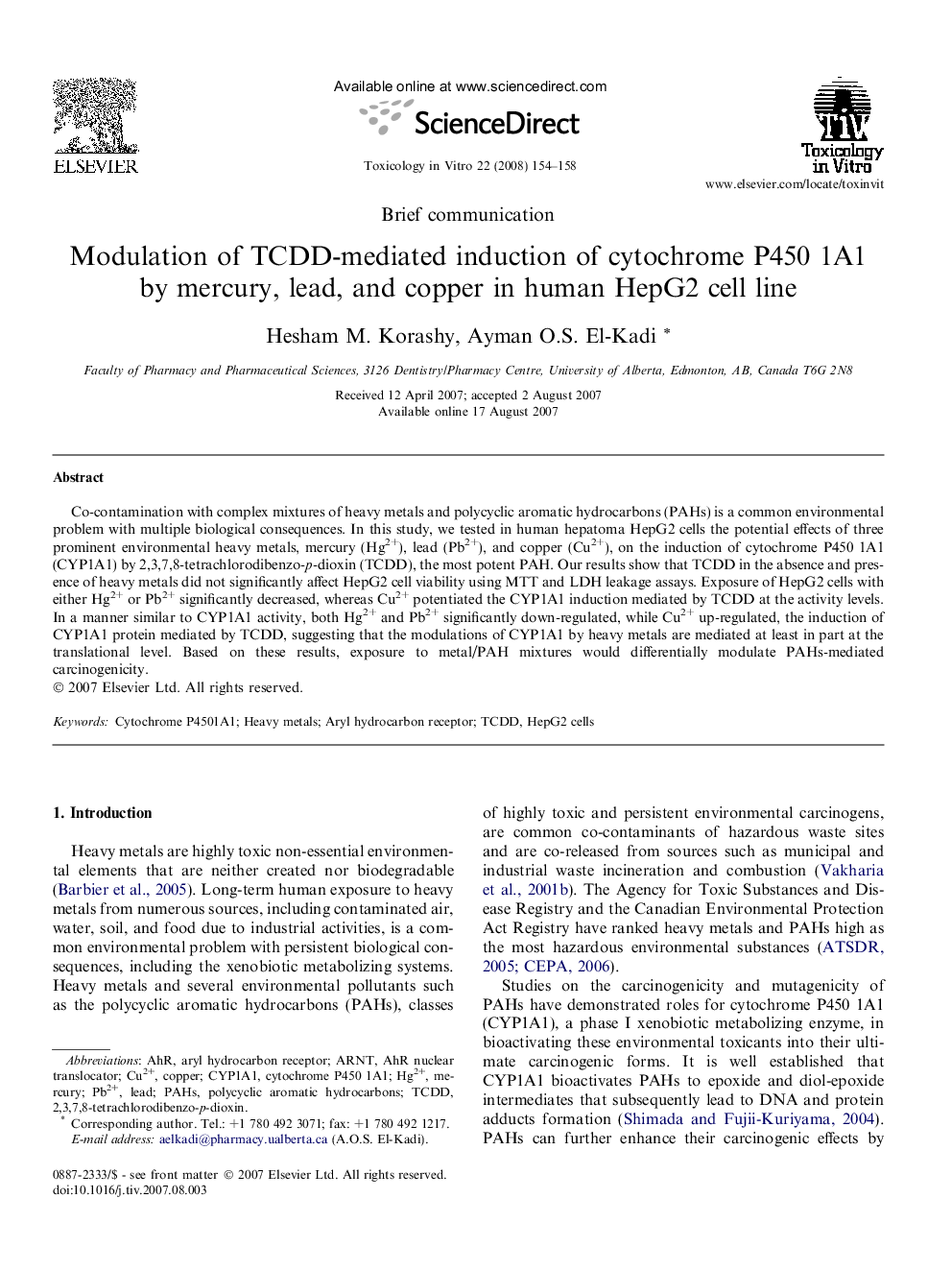| Article ID | Journal | Published Year | Pages | File Type |
|---|---|---|---|---|
| 2603627 | Toxicology in Vitro | 2008 | 5 Pages |
Co-contamination with complex mixtures of heavy metals and polycyclic aromatic hydrocarbons (PAHs) is a common environmental problem with multiple biological consequences. In this study, we tested in human hepatoma HepG2 cells the potential effects of three prominent environmental heavy metals, mercury (Hg2+), lead (Pb2+), and copper (Cu2+), on the induction of cytochrome P450 1A1 (CYP1A1) by 2,3,7,8-tetrachlorodibenzo-p-dioxin (TCDD), the most potent PAH. Our results show that TCDD in the absence and presence of heavy metals did not significantly affect HepG2 cell viability using MTT and LDH leakage assays. Exposure of HepG2 cells with either Hg2+ or Pb2+ significantly decreased, whereas Cu2+ potentiated the CYP1A1 induction mediated by TCDD at the activity levels. In a manner similar to CYP1A1 activity, both Hg2+ and Pb2+ significantly down-regulated, while Cu2+ up-regulated, the induction of CYP1A1 protein mediated by TCDD, suggesting that the modulations of CYP1A1 by heavy metals are mediated at least in part at the translational level. Based on these results, exposure to metal/PAH mixtures would differentially modulate PAHs-mediated carcinogenicity.
